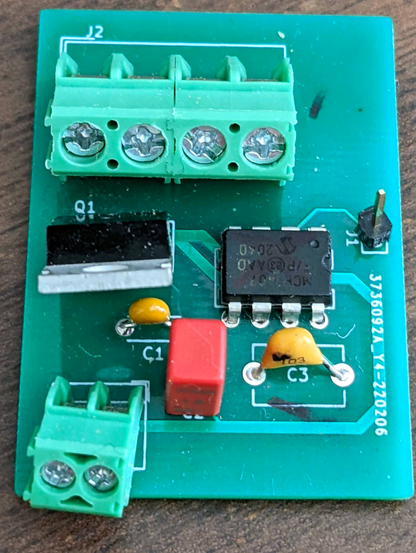ExpeRIIencing Pi Day at RII
- Liddell Muccio
- Mar 22, 2022
- 4 min read
What is it like to celebrate Pi Day at RII? Here's a recap of graphic design intern Liddell's first experience of this RII tradition.

Pi Day, otherwise known as March 14th, is usually a celebration reserved for mathematicians. Or at least that’s what I've typically associated it with since my math teachers always had us working on Pi formulas on March 14th. But when I heard the buzz around the office about people preparing for RII's annual Pi Day celebration, I started to wonder what all the hype was about. RII has celebrated this "holiday" for six years now and I was racking my brain trying to figure out how 3.14 could be that exciting. Then I learned that Pi Day at RII is completely different and much more fun than my school classroom experiences.
This year, employees gathered at RII offices or tuned in remotely for the celebration. Pi Day is commemorated by eating a variety of delicious pies, but more importantly RII focuses on the raspberry kind. While raspberry pies are tasty, I’m referring to the Raspberry Pi without the “e,” which is a series of small single-board computers developed in the United Kingdom by the Raspberry Pi Foundation. I knew of the Raspberry Pi when I started at RII, but when you put one in the hands of an engineer you really learn all that this awesome little thing is capable of.

RII engineers prepare for Pi Day by voluntarily creating innovative projects using the Raspberry Pi and putting together presentations to share with the company that combine technical jargon with an explanation of how their project can be used in the real world. It’s a chance for both fellow engineers and non-engineers to witness the creativity and brain power of their colleagues in action. I know first-hand that engineers love to create, so I wasn’t surprised when this year’s projects were both fun and (somewhat) practical.

Who had the best Raspberry Pi project? Keep reading to learn about the “Meowtivatr,” the “LEXIcon,” and “The Most Pretentiously Over-Engineered and RIIdiculously Expensive Alarm Clock.” I can’t pick a favorite because they were all creative and fun in their own way, so I’ll let you be the judge.
Project 1: Meowtivatr
Anthony was up first with the “Meowtivatr” (a cat-related play on the word “motivator“ in case you didn’t catch that). In an effort to get his beloved cats more exercise, he created devices that dispense cat treats into metal bowls. These devices are placed in different locations in the house so the cat is motivated to run across the room or scale a flight of stairs when a treat is dispensed into a bowl.

Here’s Anthony’s technical overview of his creation:
“The Meowtivatr is built on an ESP32 microcontroller, featuring FreeRTOS, WiFi, and the application itself uses the Rust programming language. Meowtivatr units use a 'Controller-Responder' hierarchy to delegate current control and timing of treat dispensing. The design is primarily laser cut acrylic, which allows for rapid manufacture. The units also integrate a proximity sensor, which allows for detection of cats eating the treats, enabling more dynamic feed modes such as 'Back and Forth.' In this mode, the feeders dispense shortly after the last treat has been taken, motivating the cat to move from dispenser to dispenser.”

Anthony had everyone’s attention when he showed us a video of how the Meowtivatr works with the help of his assistants Sally, Rosie, and Amelia. There are a lot of cat lovers at RII, so this project was a win-win.
Project 2: LEXIcon
Lexi, Aaron, and Phil took the stage next with the “LEXIcon,” a 3D-printed button that plays a motivational phrase pre-recorded by Lexi each time you press it. Lexi is part of RII’s Talent Acquisition team and she’s known as one of the people you can turn to when you need a pep talk, a laugh, or a smile. This device allows you to enjoy a “Lexi-ism” whenever you need a pick-me-up.

Aaron and Phil were the technical power behind the LEXIcon. This is their description of how the device was created and how it functions:
“LEXIcon leverages the new Raspberry Pi microcontroller, the RP2040 Feather board from Adafruit. This inexpensive microcontroller package has low size, weight, and power, supports all of Adafruit's FeatherWings, and can be programmed with the Arduino libraries. The electronic button comes with an automatic power off circuit to switch the board off, extending battery life. The 3D printed case was recycled from a previous Pi Day project and modified to be a mag-lev button, giving enough room for the electronics to fit in the case and maintain linear button pressure.”

This project is a great example of RII’s core value, Stay Human. As an intern who has worked at RII the past six months, I have personally experienced RII’s strong sense of community and the way that we lift each other up. The LEXIcon is a reminder that we’re here for one another as colleagues and teammates, even if we can’t always be together in person.
Project 3: The Most Pretentiously Over-Engineered and RIIdiculously Expensive Alarm Clock
The final project of the day was Roger’s alarm clock or as he put it, “The Most Pretentiously Over-Engineered and RIIdiculously Expensive Alarm Clock.” Roger told us he spent four months working on an alarm clock with sunrise simulation for six times the cost of a similar, commercially available device. He even linked the clock he was referring to at the end of his presentation, available for $32.99 at Target. Hilarious.

Despite the laughs, the fact that Roger created this device had me in awe. Here’s how he did it:
“My project is a sunrise alarm clock utilizing a 4 meter RGBW LED strip, which allows custom color temperature and brightness controls while GPS clock synchronization provides nanosecond precision. Also, a lithium polymer battery with a charge/boost circuit provides UPS functionality to maintain time and GPS lock through a blackout lasting up to 4 hours. Unfortunately, in an effort to over-engineer technical features, basic UI elements were under engineered such as a lack of a snooze button, an inability to turn the alarm off, and no time display.”
RII is a lot of things, but Pi Day showed me that RII is an engineering company at heart filled with some of the most brilliant and creative minds. Collectively choosing to take time out of our work day to appreciate and acknowledge our teammates’ passion and creativity is just another typical day at RII.
Pi Day ended with a rooftop happy hour next-door. Scroll through the photos below to see how happy people were to be RIIunited with their colleagues!
















